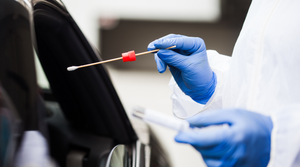Piezoelectric Devices Used in Medical Equipment
In optical coherence tomography, piezoelectric motors are used to impart rapid periodic motion to the unit’s reference mirror and imaging optics. To enable creation of two- and three-dimensional images from optical interference patterns, optical fibers must be moved both axially and laterally during the scan. Piezo motors can provide more precise movements resulting in improved image resolution over conventional electromagnetic motors.
August 6, 2010
Point-of-care and medical test equipment engages piezo technology. Where extremely fine tuned positioning and measuring equipment is required, piezo motors fill the need, which can create motion with extreme precision, from inches to nanometers.
Piezoelectric actuators are beginning to be used for transdermal drug delivery, such as with a needle-free insulin injection system. Monitoring of endoscope-gastroscope devices is also beginning to be employed using piezoelectric devices.
Biomedical microtools, such as tweezers, scissors, and drills, have been adapted to a microrobot base powered by piezo motors. Piezo motors are becoming more prevalent in microsurgery and noninvasive surgery tools.
Three-dimensional cone beam imaging, used in orthodontics and to obtain an exact model of the oral cavity for fitting oral appliances, employs the use of piezoelectric actuators for treating sleep apnea patients.
Confocal microscopy used in ophthalmology for quality assurance of implants uses piezoelectric motors. Very precise motion of the optics is required to adjust the focal plane and for surface scanning. Piezoelectric positioning systems are integrated directly into the optics.
Return to the main article, "Piezo Motors and Actuators: Medical Device Performance."
You May Also Like


